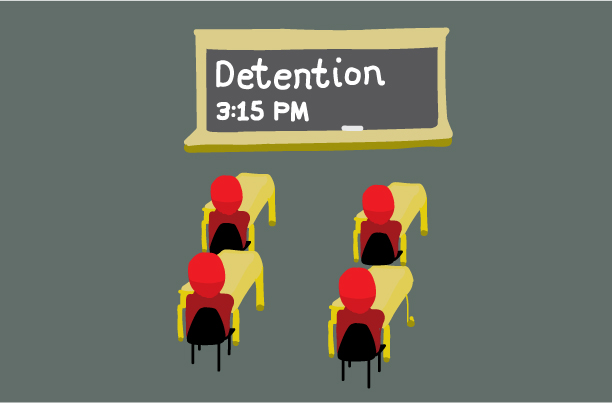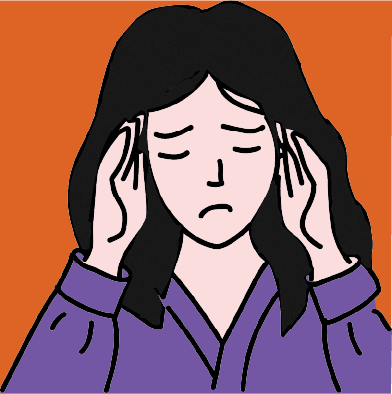School systems have started incorporating more restorative approaches, moving away from traditional discipline. Inglemoor is one of these, using methods such as one-on-one conversations to better understand the student and guide them to better behavior. However, increasing the frequency and variety of restorative practices would provide additional, necessary support for students.
Disciplinary methods can create conflict between educators and the students who are regularly disciplined. Other than the actual punishment — such as eating lunch or working on homework in silence for lunch detention and after-school detention, respectively — Dean of Students Shawn Rainwater said that one-on-one conversations are the most effective method of improving student behavior. These conversations are opportunities for educators to connect with the student and understand personal situations. Still, this isn’t the only effective method, and other restorative practices should be added for students who aren’t ready to open up.
During lunch detention, offending students are isolated in a specific classroom with their meal. Lunch detention is usually issued for minor violations regarding the phone policy or tardiness. The goal is that the punishment of missing out on a fun and social lunch break, combined with a conversation with administration beforehand, is enough motivation to correct behavior. However, if misbehavior continues, administration turns to after-school detention. The problem with after-school detention is that it doesn’t provide much more opportunity for students to improve. The supervising teacher only monitors the students working on their homework in silence. In short, the negative consequence of the punishment increases in response to a persisting misbehavior, but the restorative part of the consequence doesn’t. To better execute the consequence and help students understand the impact of their actions, restorative practices should be used or added. Because they encourage positive behavior, students know that they won’t just be disciplined, but also listened to with understanding and guided towards improvement.
Restorative justice uses participatory learning and constructive dialogue. Since most conflicts stem from feeling unheard, unseen or unvalued and since common problems — such as being late to class — are connected to teacher and student relationships, establishing a sense of community and belonging is vital. Restorative justice follows this by building a supportive community to help students understand the impact of their actions and focus on accountability. One common technique is restorative circles. First, they acknowledge that students are incredible works-in-progress, which reinforces that their mistakes are just opportunities for growth instead of flaws. Then, having students with different offenses discuss their grievances and misbehaviors, perhaps during Viking Time, can help them reach understanding that is harder to achieve with an adult. Having a teacher or administrator guide the conversation would provide just enough control to the adult to keep it effective and on-track, but still let students feel comfortable sharing. Especially for students who find talking about their problems with school staff uncomfortable or who have become increasingly disconnected from the school after many repeat offenses, fostering a more supportive environment would benefit them greatly. These discussions, which also help students develop valuable socio-emotional skills for conflict resolution, decrease chances of future conflict and even benefit them outside of school.
Likewise, for students who were disciplined for conflict with other students, encouraging them to talk with each other outside of restorative circles, without the presence of an adult, could make them feel more comfortable to share. Having them work to resolve issues together could be more effective than any understanding a teacher or administrator could ever foster.
For more severe misbehaviors or students who continue to act out, administrators assign saturday school. Similar to after-school detention, students only work on homework, and the administration’s only role is to enforce the discipline. While conversations before the consequence are undoubtedly effective, more conversations during and after it could guide students to better behavior more effectively. This could be especially helpful during the consequence, as the monotony of detention or saturday school is fresh in students’ minds, providing more motivation for meaningful reflection. These “check-ins” are used during in-school suspension to great effect, so why can’t they be used for other consequences?
One-on-one conversations, especially for lesser misbehaviors, sometimes don’t involve the teacher who issued the consequence. If a student thought that a consequence was unfair — for example, serving a lunch detention for using their phone during the last few minutes of class — then including the teacher in question could prevent future conflicts. Perhaps the teacher had a good reason specific to their class that the student and administrator hadn’t recognized. But even if they didn’t, it would go a long way towards mending the student-educator relationship and improving future behavior. Involving parents could also help. A discussion with a parent present could be more impactful compared to just school staff.
Restorative practices are limited. Schools are rushed by the arbitrary requirement of graduating students in four years, and they may feel they don’t have enough time to fully correct a student’s behavior. Therefore, if a solution isn’t effective, then the school should try other techniques. Inglemoor shouldn’t be limited to relying on one-on-one conversations.
Students face a disciplinary system that, while adequately effective, could still be improved. Communication is key to improvement and should be used even more. Having a greater variety of behavior-correcting methods would improve chances of connecting with a student in a meaningful way. To become an ideal place of learning, schools need to reevaluate their discipline systems and incorporate a greater variety of restorative approaches.










